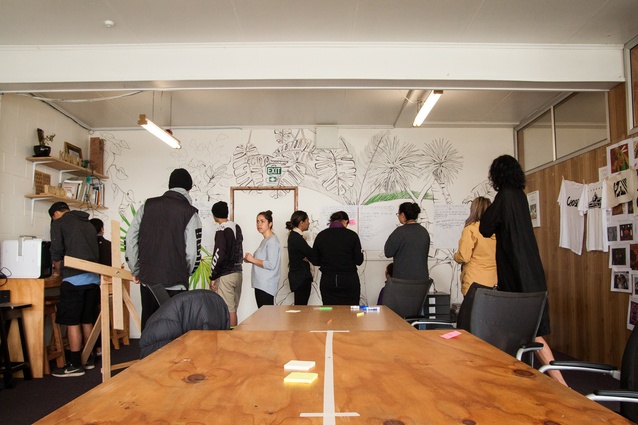Power to the people: Maia Ratana
This architecture researcher is on a mission to empower young Māori to take control of their spaces.
“I can remember when buildings first began to fascinate me.” Maia Ratana recalls. “I was seven. Ever since, I’ve compulsively picked up pen and paper to map out floor plans.”
Currently studying for her Masters in Architecture at Unitec, Maia is one of the three emerging researchers who make up the rangatahi ahu for Kāinga Tahi, Kāinga Rua – the flagship Māori housing research programme for the Building Better Homes, Towns and Cities (BBHTC) National Science Challenge.
“The Challenge brings architecture alive and is creating true community engagement,” explains Maia. “The basis of Ako Ahu – the kaupapa of Kāinga Tahi Kāinga Rua – is all about helping each other and that is really important when it comes to Māori housing.”
Understanding how to encourage and empower Māori youth through engaging them in the design process is Maia’s core interest. “I’ve always been really interested in function. How do people live in a space? How do they use the space? Architecture can have a huge impact on people’s lives.”
She firmly believes that architecture and design are keys to evolving New Zealand’s communities. “We need to get better at reflecting who we are as Aotearoa. Architecture should become something that is accessible to everyone and not just seen as being for the very wealthy.”
Over the past year, she and fellow researchers James Berghan and Jacqueline Paul have conducted a series of BBHTC waananga (meetings) throughout New Zealand. Held in Auckland, Kaikohe and Dunedin, the purpose of the waananga was to gather perceptions from Māori youth about papakāinga (housing) and what housing could be built to better support their future aspirations.
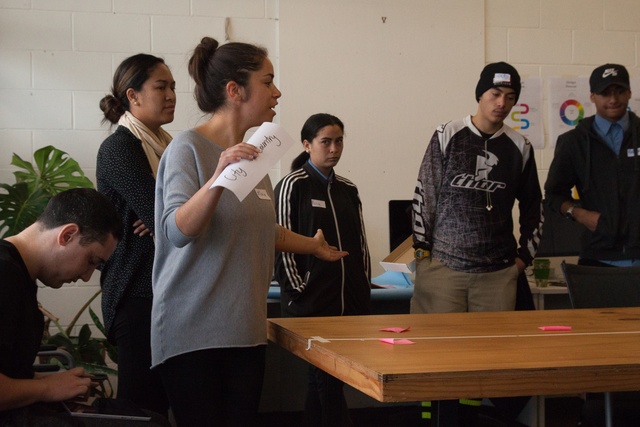
The insights were and continue to be a solid reminder to Maia about how Māori can use architecture as a tool to build resilient, fulfilling communities. “Each time we spoke to rangatahi in different spaces. What we quickly realised was the spaces had a huge impact on how they engaged with us,” she explains.
“The spaces impacted the conversation and informed how at ease they felt to talk to us. What came up as a recurring theme was the lack of places young Māori feel comfortable, particularly in university settings.”
Maia’s passion has grown for encouraging more Māori students to get involved with building spaces in their communities – creating places for Māori, by Māori. “Architecture is simply a pathway and a tool. It’s my way of contributing. I’m so inspired by what great, well-designed spaces can do for people. That’s why I got involved with community work and working with young people.”
Today, she juggles her studies and work on BBHTC with community engagement work through a Kaikohe-based not-for-profit design and architecture studio called ĀKAU.
“About 90 per cent of the people I work with are Māori,” she says. “Our kaupapa is to create avenues for young people to be involved in design. We work with runanga, iwi and hapu on design and collaboration, community engagement and on smaller projects in schools and across professional networks.”
ĀKAU – which means where the water meets the land – uses workshops to give youth hands-on experience in the design of real projects within their community. Some of the organisations ĀKAU has worked with include the Far North District Council, Te Hau Ora o Ngāpuhi, Creative Northland, Ministry for Primary Industries, Sports Northland, Northland College and Kaikohe Intermediate School.
“I love working with young people outside of the cities,” she says. “What I observe is that there is a lot that needs to be done around encouraging and building their confidence to be amazing humans.”
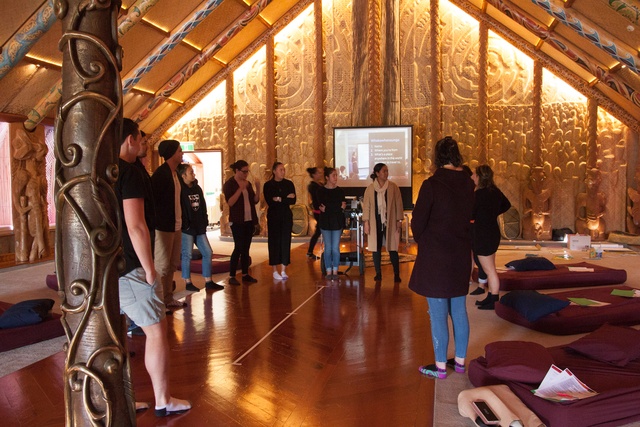
The work is also a chance for Maia to foster sustainable design and be on the frontline tackling the issue of housing affordability. She says developing sustainable buildings is critical for Māori youth.
In 2017, Maia was invited to be an indigenous representative at a UN Framework Convention on Climate Change in Germany. Being the only young indigenous delegation, she says it woke her up to the possibilities of sustainability and collaborating with others.
“What it made me realise was that being Māori or Sami, we have the same values. We look to the environment for answers and it is heartbreaking when we see what is happening. From an architectural perspective, the state of the world highlights the importance of designing our own buildings.”
Descending from Ngāti Rangiwewehi, Ngāti Raukawa and Ngaa Rauru ki Tahi, Maia was born and raised in Rotorua before moving to Auckland 11 years ago. After completing her Bachelor of Architecture, she spent a year full-time learning Te Reo at Te Wananga Takiura in Auckland’s Royal Oak.
The following year, just six weeks into her Masters of Architecture course, she says she became “disillusioned” with mainstream education and quit to go travelling through the US, Central America and Europe. On her return, she spent a few years working in other industries before re-committing to her studies last year.
“It’s taken me a lot of time to get where I am today. A lot of my experience of working with Building Better, Homes, Towns and Cities has been about finding myself along the way.”
Being able to communicate in Te Reo has had a huge influence on the way she now approaches her work. “I am much more aware of the lack of kaupapa Māori in architectural education,” she says. “As students, we can help to change that. We need to be Māori and do it for Māori. I firmly believe that taking a Te Ao Māori approach needs to be embraced both by our people and in institutions where design and architecture are taught.”
This means understanding that, for Māori, a building is much more than just a building. It has a spiritual connection.
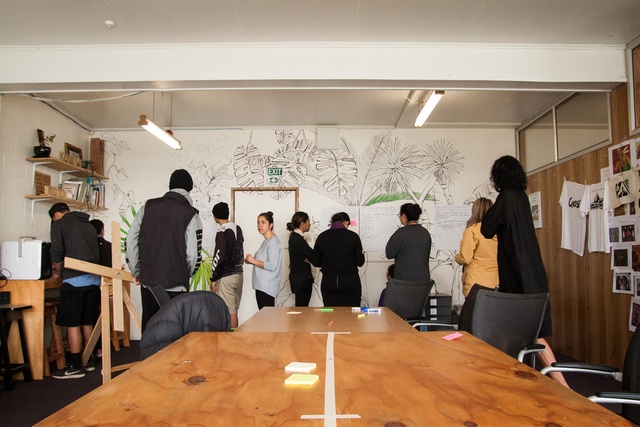
Maia has been working with a whānau/hapu in the Far North to help develop their site – re-purchased land that was confiscated, on which they are now designing mārae, kura kaupapa, kohenga reo and papakainga.
“You are only allowed to speak Te Reo Māori when you go onto the land,” she says. “It is very inspiring because their work is being done in in a way that really honours kaupapa Māori. I find this type of work challenging and invigorating.”
It’s also inspired Maia to want to pursue her own vision of designing spaces that provide Māori university students access to affordable, culturally appropriate accommodation when studying in New Zealand cities.
“I’m shocked by how difficult it is for young Māori students,” she says. “Some of my fellow students are known to sleep in their cars during the times they are studying and then head back home in the weekend, because there is such a housing affordability issue in all of our major cities.”
It’s an issue Maia is addressing in her thesis topic this year where she will be investigating how the creation of an affordable housing typology for Māori students could help with retention and success rates.
“Government and iwi initiatives put a lot of money into education but there is so much hardship due to the high cost of living,” she says. “Something like this would be a long-term investment into the health and education of our rangatahi.”
To learn more about Maia’s work for Building Better Homes, Towns and Cities, watch here.
Read about other research areas within the Building Better Homes, Towns and Cities National Science Challenge here and here.

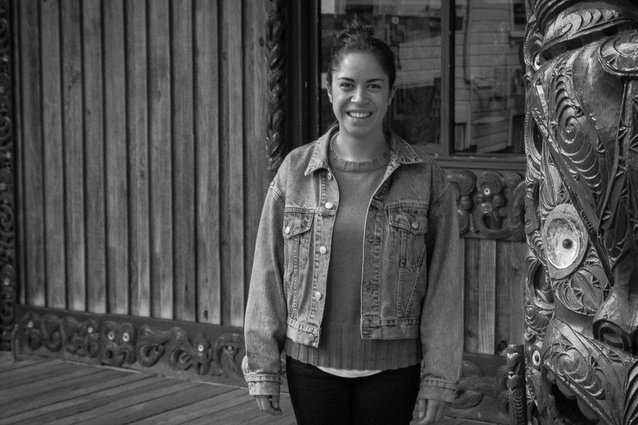
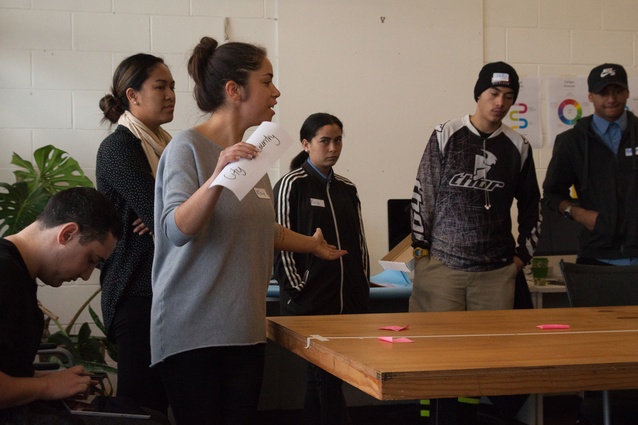
!["What we quickly realised was the spaces had a huge impact on how the [Māori youth] engaged with us,” Maia says.](https://cdn.architecturenow.co.nz/site_media/media/cache/22/33/2233299b6a9baad820bba265e9167266.jpg)
